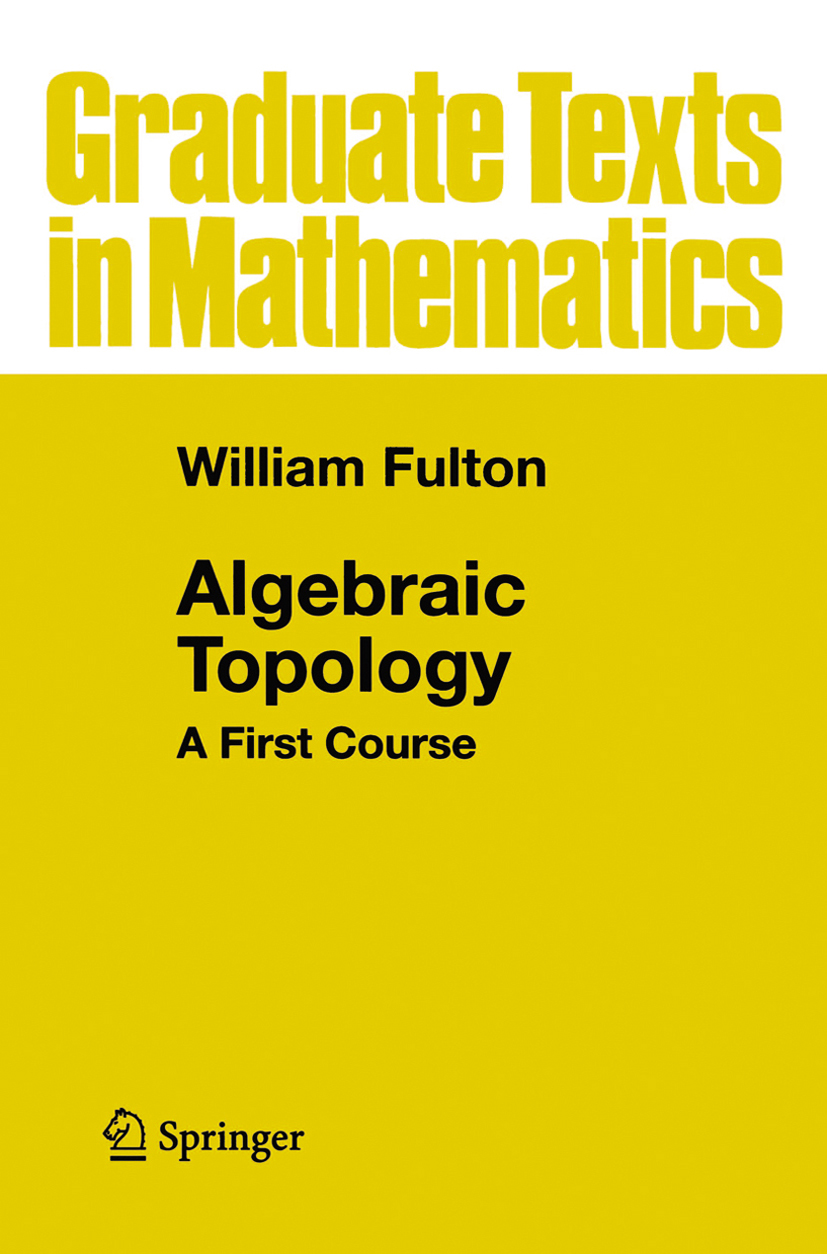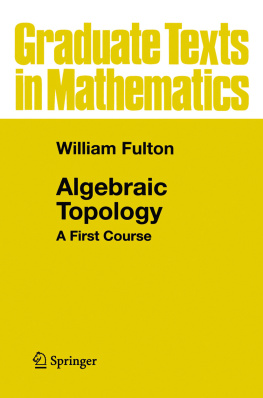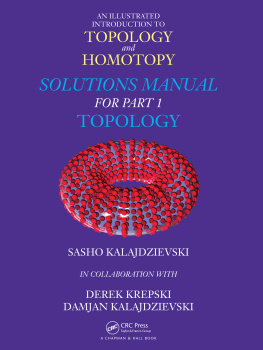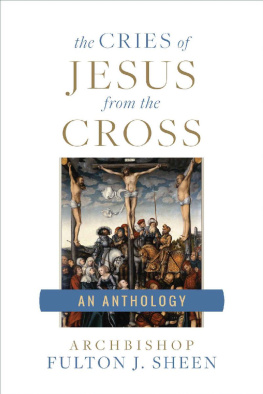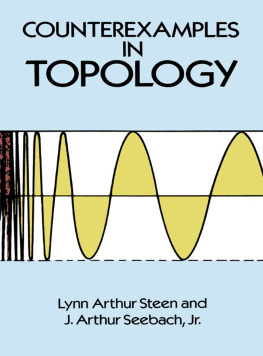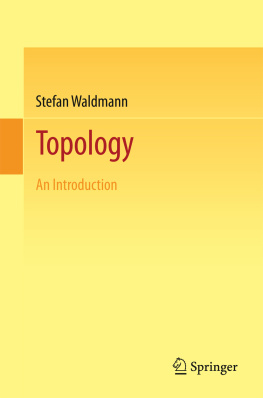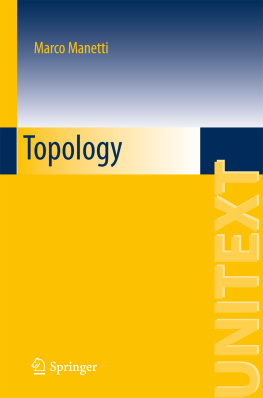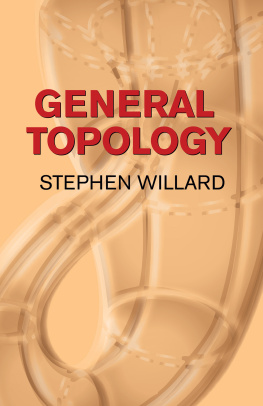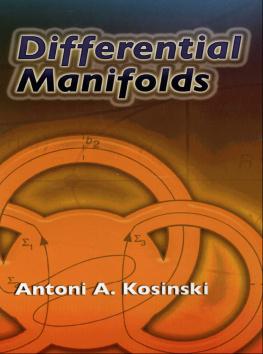To the Teacher . This book is designed to introduce a student to some of the important ideas of algebraic topology by emphasizing the relations of these ideas with other areas of mathematics. Rather than choosing one point of view of modern topology (homotopy theory, simplicial complexes, singular theory, axiomatic homology, differential topology, etc.), we concentrate our attention on concrete problems in low dimensions, introducing only as much algebraic machinery as necessary for the problems we meet. This makes it possible to see a wider variety of important features of the subject than is usual in a beginning text. The book is designed for students of mathematics or science who are not aiming to become practicing algebraic topologistswithout, we hope, discouraging budding topologists. We also feel that this approach is in better harmony with the historical development of the subject.
What would we like a student to know after a first course in topology (assuming we reject the answer: half of what one would like the student to know after a second course in topology)? Our answers to this have guided the choice of material, which includes: understanding the relation between homology and integration, first on plane domains, later on Riemann surfaces and in higher dimensions; winding numbers and degrees of mappings, fixed-point theorems; applications such as the Jordan curve theorem, invariance of domain; indices of vector fields and Euler characteristics; fundamental groups and covering spaces; the topology of surfaces, including intersection numbers; relations with complex analysis, especially on Riemann surfaces; ideas of homology, De Rham cohomology, ech cohomology, and the relations between them and with fundamental groups; methods of calculation such as the Mayer-Vietoris and Van Kampen theorems; and a taste of the way algebra and functorial ideas are used in the subject.
To achieve this variety at an elementary level, we have looked at the first nontrivial instances of most of these notions: the first homology group, the first De Rham group, the first ech group, etc. In the case of the fundamental group and covering spaces, however, we have bowed to tradition and included the whole story; here the novelty is on the emphasis on coverings arising from group actions, since these are what one is most likely to meet elsewhere in mathematics.
We have tried to do this without assuming a graduate-level knowledge or sophistication. The notes grew from undergraduate courses taught at Brown University and the University of Chicago, where about half the material was covered in one-semester and one-quarter courses. By choosing what parts of the book to coverand how many of the challenging problems to assignit should be possible to fashion courses lasting from a quarter to a year, for students with many backgrounds. Although we stress relations with analysis, the analysis we require or develop is certainly not hard analysis.
We start by studying questions on open sets in the plane that are probably familiar from calculus: When are path integrals independent of path? When are 1-forms exact? (When do vector fields have potential functions?) This leads to the notion of winding number, which we introduce first for differentiable paths, and then for continuous paths. We give a wide variety of applications of winding numbers, both for their own interest and as a sampling of what can be done with a little topology. This can be regarded as a glimpse of the general principle that algebra can be used to distinguish topological features, although the algebra (an integer!) is fairly meager.
We introduce the first De Rham cohomology group of a plane domain, which measures the failure of closed forms to be exact. We use these groups, with the ideas of earlier chapters, to prove the Jordan curve theorem. We also use winding numbers to study the singularities of vector fields. Then 1-chains are introduced as convenient objects to integrate over, and these are used to construct the first homology group. We show that for plane open sets homology, winding numbers, and integrals all measure the same thing; the proof follows ideas of Brouwer, Artin, and Ahlfors, by approximating with grids.
As a first excursion outside the plane, we apply these ideas to surfaces, seeing how the global topology of a surface relates to local behavior of vector fields. We also include applications to complex analysis. The ideas used in the proof of the Jordan curve theorem are developed more fully into the Mayer-Vietoris story, which becomes our main tool for calculations of homology and cohomology groups.
Standard facts about covering spaces and fundamental groups are discussed, with emphasis on group actions. We emphasize the construction of coverings by patching together trivial coverings, since these ideas are widely used elsewhere in mathematics (vector bundles, sheaf theory, etc.), and ech cocycles and cohomology, which are widely used in geometry and algebra; they also allow, following Grothendieck, a very short proof of the Van Kampen theorem. We prove the relation among the fundamental group, the first homology group, the first De Rham cohomology group, and the first ech cohomology group, and the relation between cohomology classes, differential forms, and the coverings arising from multivalued functions.
We then turn to the study of surfaces, especially compact oriented surfaces. We include the standard classification theorem, and work out the homology and cohomology, including the intersection pairing and duality theorems in this context. This is used to give a brief introduction to Riemann surfaces, emphasizing features that are accessible with little background and have a topological flavor. In particular, we use our knowledge of coverings to construct the Riemann surface of an algebraic curve; this construction is simple enough to be better known than it is. The Riemann-Roch theorem is included, since it epitomizes the way topology can influence analysis. Finally, the last part of the book contains a hint of the directions the subject can go in higher dimensions. Here we do include the construction and basic properties of general singular (cubical) homology theory, and use it for some basic applications. For those familiar with differential forms on manifolds, we include the generalization of De Rham theory and the duality theorems.
The variety of topics treated allows a similar variety of ways to use this book in a course, since many chapters or sections can be skipped without making others inaccessible. The first few chapters could be used to follow or complement a course in point set topology. A course with more algebraic topology could include the chapters on fundamental groups and covering spaces, and some of the chapters on surfaces. It is hoped that, even if a course does not get near the last third of the book, students will be tempted to look there for some idea of where the subject can lead. There is some progression in the level of difficulty, both in the text and the problems. The last few chapters may be best suited for a graduate course or a year-long undergraduate course for mathematics majors.
